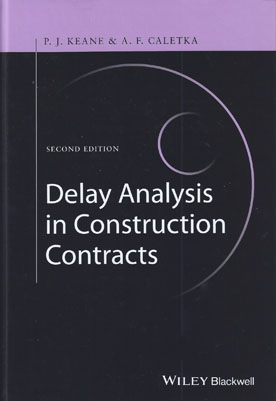
The most significant unanticipated costs on many construction projects are the financial impacts associated with delay and disruption to the works. Assessing these, and establishing a causal link from each delay event to its effect, contractual liability and the damages experienced as a direct result of each event, can be difficult and complex.
This book is a practical guide to the process of delay analysis and includes an in-depth review of the primary methods of delay analysis, together with the assumptions that underlie the precise calculations required in any quantitative delay analysis. The techniques discussed can be used on projects of any size, under all forms of construction contract, both domestic and international.
The authors discuss not only delay analysis techniques, but also their appropriateness under given circumstances, demonstrating how combined approaches may be applied where necessary. They also consider problematic issues including ‘who owns the float’, concurrent delay, early completion programmes, and disruption. The book has been brought fully up to date, including references to the latest publications from the CIOB, AACEI and SCL, as well as current case law. Broad in scope, the book discusses the different delay analysis approaches likely to be encountered on national and international projects, and features practical worked examples and case studies demonstrating the techniques commonly used by experienced practitioners.
This is an invaluable resource to programmers and schedulers, delay analysts, contractors, architects, engineers and surveyors. It will also be of interest to clients’ professional advisors managing extension of time or delay claims, as well as construction lawyers who require a better understanding of the underlying assumptions on which many quantitative delay analyses are based.